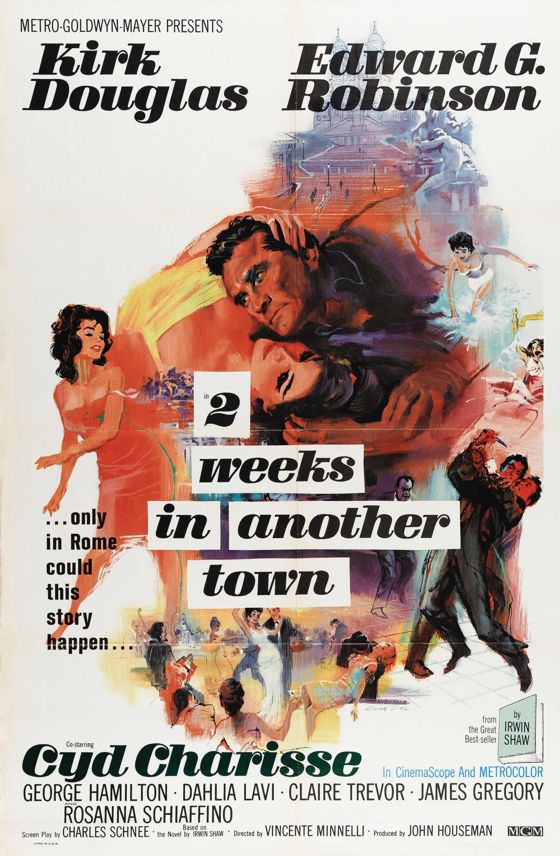
Many people know The Bad and the Beautiful, Vincente Minnelli's classic melodrama about the film business, from 1952, produced by John Houseman and starring Kirk Douglas, with a script by Charles Schnee, based on a story by George Bradshaw.
Ten years later, Minnelli, Houseman, Douglas and Schnee tackled the same subject again, in their adaptation of Irwin Shaw's novel Two Weeks In Another Town. The second film is much darker, and less well known — it flopped at the box office and was only released on DVD this year, by The Warner Archive.
Long known as a kind of lesser pendant to The Bad and the Beautiful, it has nevertheless found champions among admirers of Minnelli's work, and is by far the greater film — one of Minnelli's masterpieces.
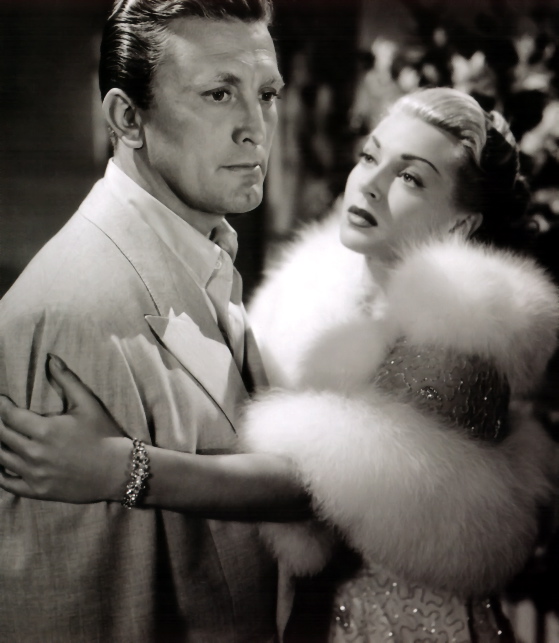
I have written before about my problems with The Bad and the Beautiful (above) — for my views on it click here — but they boil down to my mistrust of the film's self-congratulatory message. It displays a gallery of glamorous but despicable characters, lets us relish their savaging of each other, but ultimately asks us to admire them as noble monsters for their dedication to the art of film. The Bad and the Beautiful all but suggests that their egomania and meanness are required attributes for those who serve the celluloid muse.
When artists excuse the bad behavior and character flaws of artists in this way, we have a right to be suspicious of their motives, to resent the self-serving nature of the enterprise, which may be telling us more about the artists who actually made the film than about the nature of artistic creation.
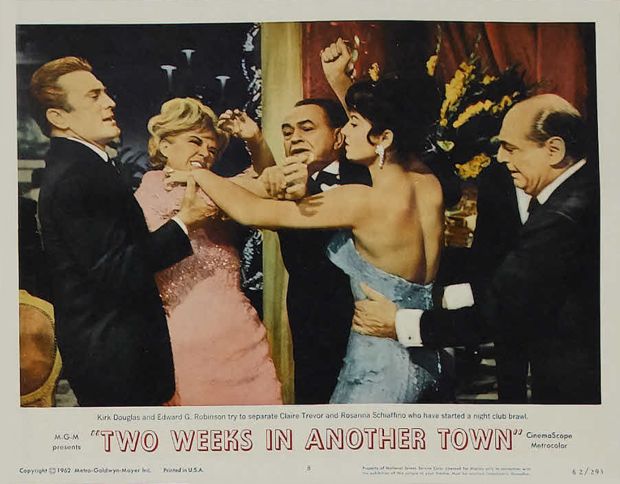
Two Weeks In Another Town is a much more mature and honest work. It's a descent into the hell that the film business really is — a hell in which personal betrayal and selfishness serve only as tokens of power, not as the means of artistic accomplishment. It charts the personal cost of the industry's meanness, not to its obvious victims, the system's losers, but to those who exercise their power for show, to demonstrate prestige — in short, to the “winners”.
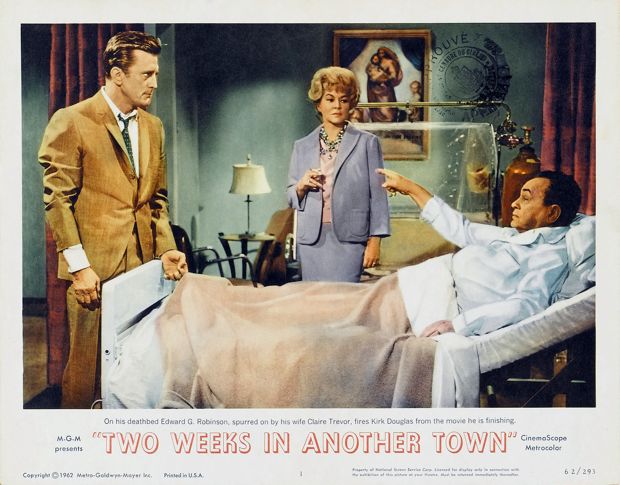
All the industry professionals featured in the film have shriveled souls, live in a state of existential terror. As they howl on the margins of nonentity, they look about desperately for one last target, one last peer to hurt and humiliate, as though they might recover their sense of self in the act.
It's truly terrifying, and only two people escape from this version of the wreck of the Pequod — a young actor embarked on a self-destructive binge and the older actor who jerks him out of the whirlpool at the last minute, because he's been there himself and knows what it feels like to drown.
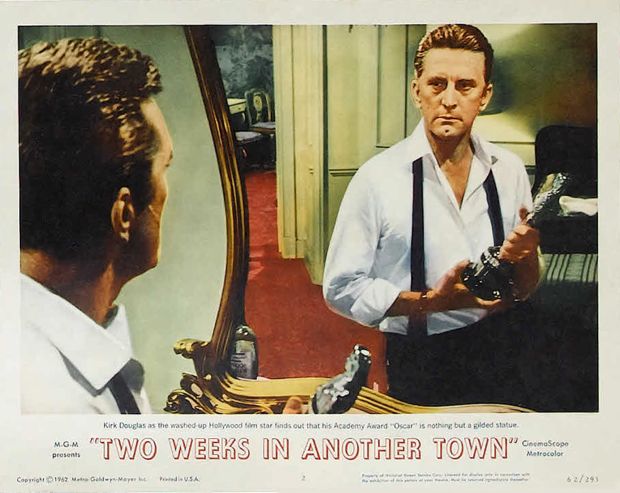
Kirk Douglas, in one of his greatest performances, plays the older actor. We meet him as he hovers near rock bottom as a man and an artist, his life and his career in shambles. Finally hitting rock bottom on location in Rome, in a desperate bid to salvage his career, is what saves him. It's when he gives up on recovering his past that he finds a way to the future. It's a powerful tale, but not very pleasant, and one can see why audiences rejected this look at the dream factory without illusions. We really don't want to see too much of that man behind the curtain, especially when he turns out to be a vicious jerk.
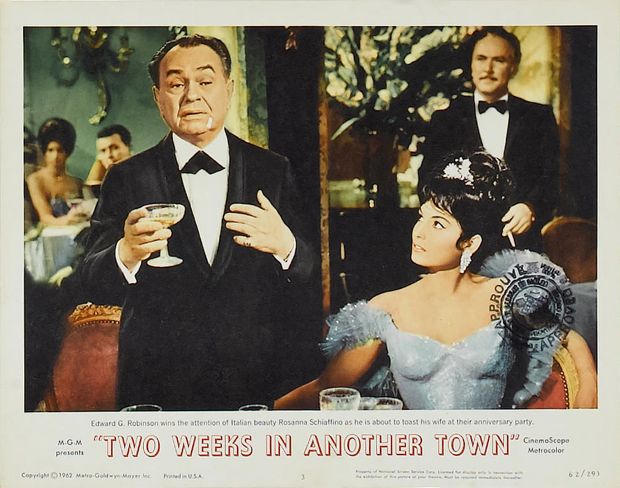
Two Weeks In Another Town may be the best movie ever made about the film business, and it's definitely one of Minnelli's most beautifully crafted films, with consistently inventive use of the Cinemascope frame and of lurid colors that mirror the lurid recesses of the Hollywood soul. The acting is uniformly fine, even from George Hamilton doing a pretty good impersonation of James Dean. Minnelli got Edward G. Robinson to give a restrained performance, and Cyd Charisse an unrestrained one — extraordinary accomplishments. Charisse has an episode of hysterics in a speeding car that will chill your blood.
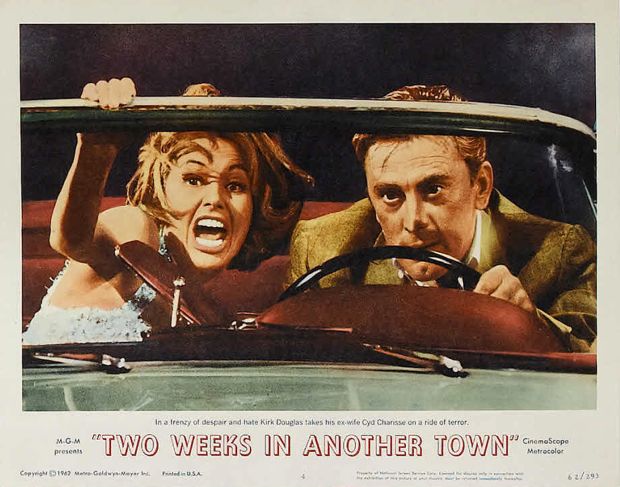
The Bad and the Beautiful is more satisfying, the way a lie can be more satisfying than the truth — for a while, anyway. The later film is two weeks in another town altogether — the real town of Hollywood, which can't escape itself even when it goes on location in Rome.

Pingback: Linkage | Uncouth Reflections
Your critique of the Bad and the Beautiful is piece of work unto itself; a Critique Noir of sorts. Sometimes I think I enjoy movie reviews more than the movies themselves.
I love the movies better, but I do enjoy writing about them.
Iv’e queued up both movies on Amazon and watched the Bad and the Beautiful last night. Totally engaging and entertaining movie but as you pointed out, quite perverse. It’s very much a justification of bad behaviour and skewed values. I’m now looking forward to viewing Two Weeks.
Thanks for introducing me to these.
I’m guessing that the somewhat disturbing attempted-suicide-by-car scene in BandB is the progenitor of the car scene in Two Weeks. Can’t wait
The scene in the movie lobby where Douglas anxiously awaits the reaction to his breakout work seems to be copied/referenced in Hitchcock (2012)
Bill, I think you’ll find watching the films back to back very illuminating, as well as enjoyable, since they’re both very well made.
Back to back watch complete. I’m always surprised when I see how many scenes, themes and even entire movies are recycled. They even sampled the “Bad and Beautiful” in this one. I think you made special mention of Cyd Charisse’s emotional explosion in the ‘suicide by car’ scene. I have to say that I found Lana Turner’s ‘suicide by car’ scene in BandB downright disturbing; terror with a sexual charge. Didn’t expect that.
I found the BandB much more entertaining despite its perversity but Two Weeks is an interesting remake of sorts on many levels. Italy is always a great background.
Thanks for setting these up for easy access and enjoyment by this casual film buff!
Glad you enjoyed them and found them interesting — I sure did!